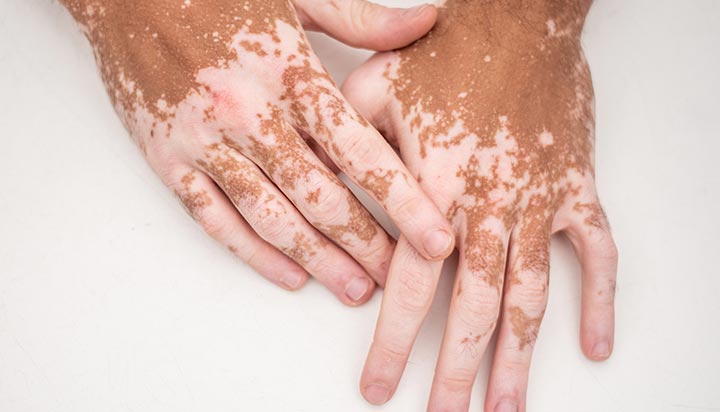Have you ever wondered what could be wrong when you see people with their natural skin peeling off? Well, if you don’t know, this kind of skin condition is called “vitiligo.” Anyone can have this condition due to certain things or factors.
But it’s okay if you’re reading about this for the first time. In this article, the causes and treatments of vitiligo are explained.
Vitiligo
Vitiligo is a skin condition that causes loss of complexion. Your body appears lighter than the actual skin colour or turns white completely. This happens when your immune system destroys melanocytes. If you don’t know, melanocytes are skin cells that produce melanin — the chemical that provides the skin with pigmentation or colour.
Anyone can get vitiligo; no sexes or races are exempted. This condition becomes more visible before age 30. It can appear on your feet, face, hands, mouth, arms, and nose. Over the years, studies have shown that vitiligo can be genetic. In other words, you can inherit it from your family.
The following health conditions can put you at risk:
-
Diabetes.
-
Anemia.
-
Lupus.
-
Arthritis.
-
Thyroid disease.
Read Also: Wizkid reveals potential release date for new album
Causes of vitiligo
Your vitiligo can be as a result of the following:
1. Stress
If you continue to experience physical or emotional stress, your melanocyte cells can change, particularly after an injury.
2. Genetic
Your genetic or DNA can cause vitiligo, affecting your melanocyte cells.
3. Chemical
Getting exposed to toxic chemicals can affect how your melanocyte cells function.
4. Autoimmune condition
Your immune system can develop into antibodies disruptive to your melanocytes. This is because your immune system can regard healthy cells as invaders, such as bacteria that want to cause harm to your body.
Are there treatments for Vitiligo?
Vitiligo is not harmful to the body. However, when it starts to get to the point of you dealing with low self-esteem and emotional trouble, these are the likely treatments you will have to go through:
1. Phototherapy
Phototherapy is a treatment used to restore the colour of the skin. It can take many light therapy sessions before you begin to see the results.
2. Surgery
One part of your skin can cover another in a surgery treatment. Another way is blister grafting, which involves transferring melanocytes to depigmented areas and separating the epidermis to cover the vitiligo region.
3. Medications
The medications available are those that can slow down the loss of pigmentation because there are no specific drugs to stop vitiligo completely.
4. Depigmentation therapy
Depigmentation therapy is a process whereby your skin is removed to match other parts of your body affected with vitiligo. In other words, the skin is wholly turned white to blend with the skin with vitiligo.
